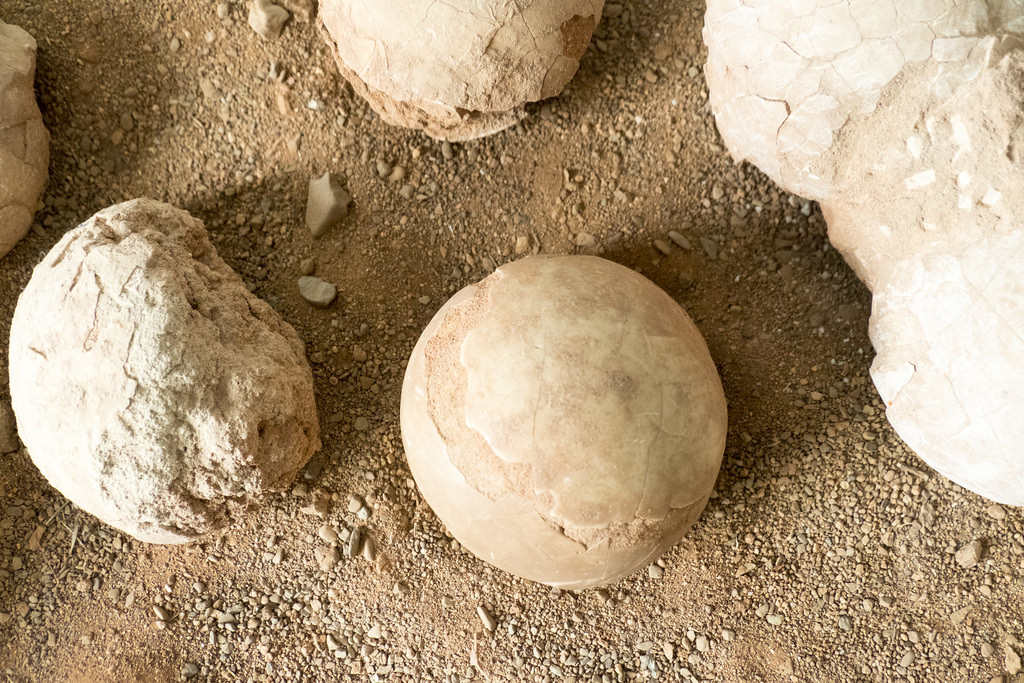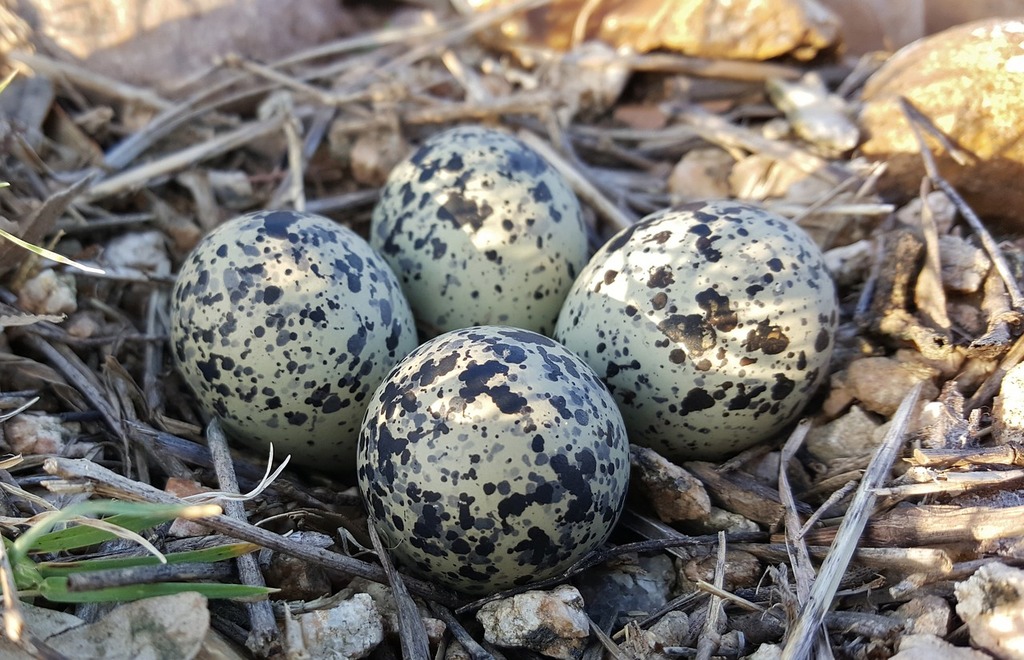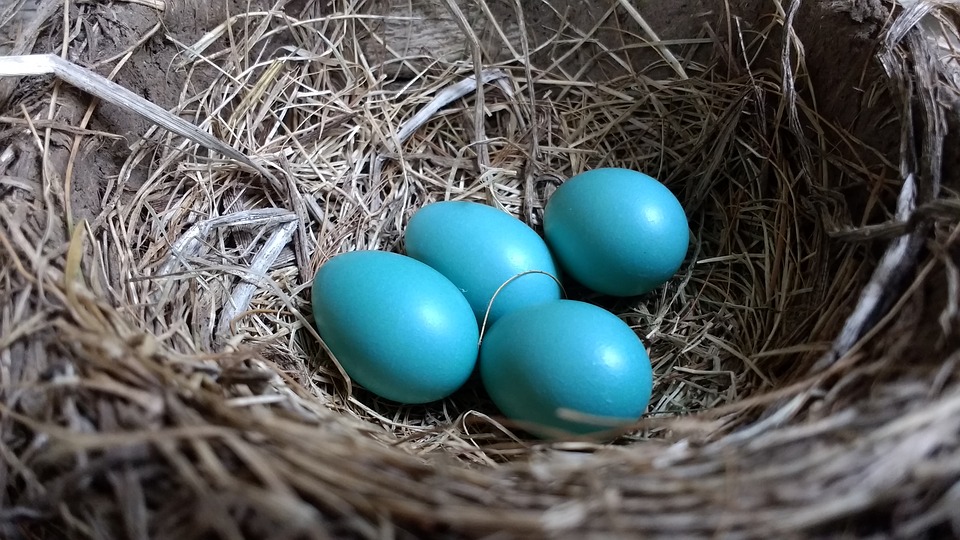
Birds are the only vertebrates that lay colored eggs. But in a new paper, Dinosaur egg colour had a single evolutionary origin, lead author Jasmina Wiemann of Yale University said that nonavian dinosaur ancestors had colored eggs as well.
About a decade ago, Richard Prum of Yale University discovered that feathers were not just derivatives of reptilian scales but new structures. Early feathers were short and did not seem to have the ability to function as insulation as ornithologists once thought. And they were colored. So if feathers did not evolve as insulation, they served another function and it was probably visual communication. Insulation and flight came later. So the color of eggs probably had an evolutionary purpose in communication as well.
The Yale researchers found two pigments in dinosaur eggs: protoporphyrin which produces reddish-brown colors and biliverdin which makes blue and green. Combinations of these pigments result in a variety of possible egg colors.
There are a variety of reasons bird eggs are colored and/or marked. Some birds that nest in cavities like owls and the Oak Titmouse lay white eggs. If camouflage were the main reason for egg color, that would make sense as eggs in a cavity don’t need to be hidden from predators. But a number of cavity-nesting species such as the House Sparrow, bluebirds, and Great Crested Flycatcher lay colored and/or speckled eggs. Eggs like these may simply be a way for birds to recognize their own nests or determine that a nest parasite like a cowbird has invaded the nest and laid a foreign egg.
Birds which build their open nests in trees generally have blue or greenish eggs, either spotted or unspotted, while birds that build in bushes or near or on the ground are likely to lay speckled eggs. The speckling serves to camouflage the eggs, especially for birds like shorebirds that build minimal nests of stones. But brown or tan eggs might just make the egg less visible, blending into the

background. The default color of

eggs is white, but if insufficient calcium is available in the local soil, the eggshell may be thin, especially around the broad end. Protoporphyrin speckling compensates for this, and increases inversely to the amount of calcium in the soil. Just like the melanin in birds wings
strengthens the feathers, the dark pigment on the eggs makes them less resistant to breakage.
In the case of colonial seabirds like murres, the markings on the eggs are there for another reason. With thousands of nests in the colony, the pigment splotches make the eggs distinctive enough so that the birds can recognize their own nests in the crowd. But with so many birds in the colony flying around, the eggs get stained with guano – bird droppings – so the parents have to continually update the mental image of their own eggs.
For some interesting information on egg color and ecology, check out this paper on the subject.
Egg color is genetically determined. In the case of chickens, the breed of the hen indicates what color eggs she will produce. White-feathered chickens with white earlobes lay white eggs; red or brown ones with red earlobes lay brown eggs; and the Ameraucana breed lays eggs with blue shells. This always comes to mind when I see someone in the grocery store buying brown eggs because “they are organic.” Brown eggs tend to have more omega-3 fatty acids, but the difference is miniscule; the price difference is not.
And then there is the custom of coloring Easter eggs. I’ll not get into that but the history of the custom is interesting and you can find it on Wikipedia.
I LOVE THIS WEBSITE
thank you
Pingback: What Birds Have Blue Eggs?
American Robin for one and there are more
There is sufficient information about cyanistic and erythristic eggs. But almost nothing can be found about leucictic, melanistic and albino eggs. Do these forms exist and what causes them? Thank you.